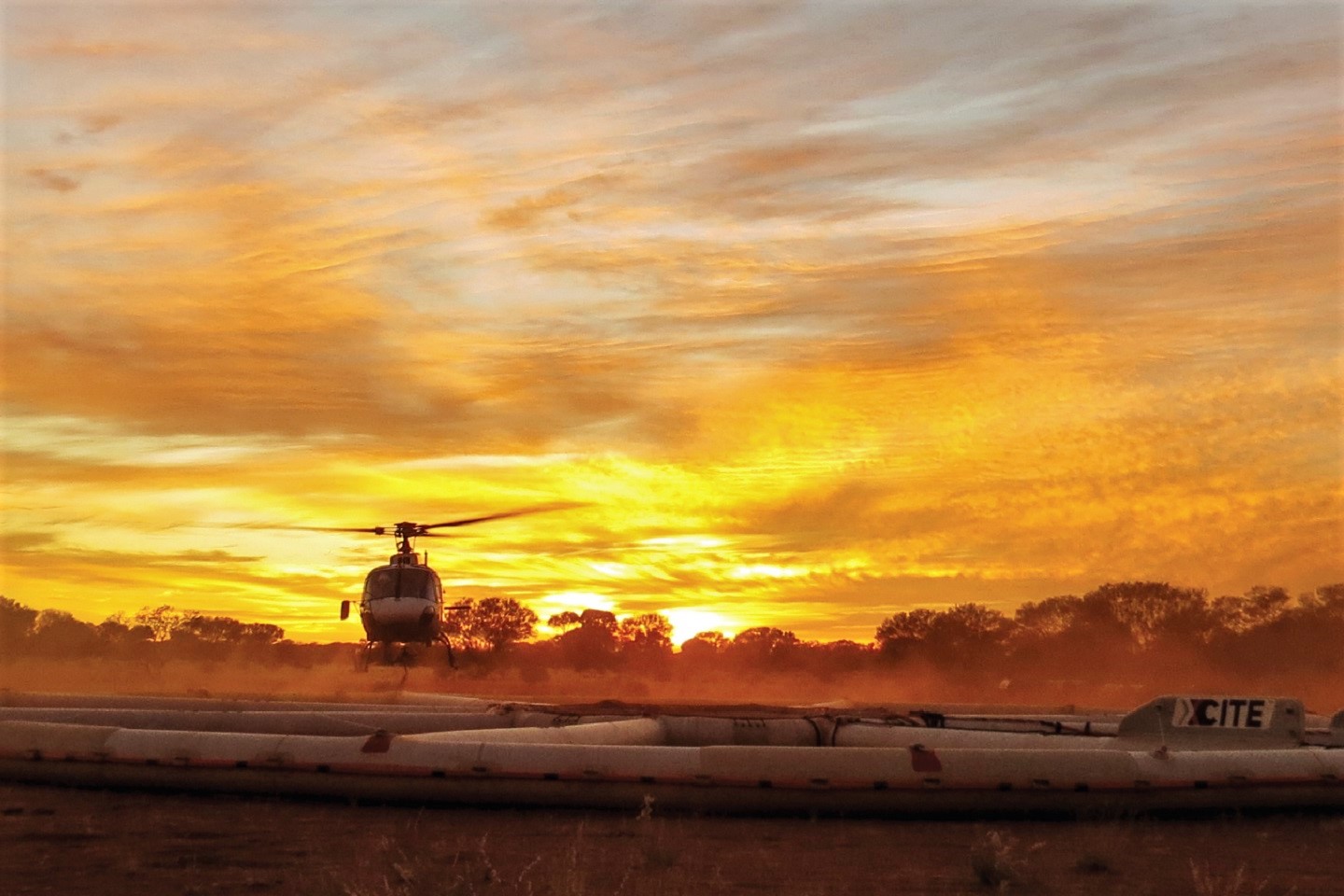Cobre has unearthed 3 priority copper targets, including a 10km long by 3km wide copper anomaly, at its recently acquired Kitlanya project on the Kalahari Copper Belt in Botswana. The company has been conducting due diligence over the extensive southern African tenure where recent exploration has included stratigraphic drilling and remodelling of geophysical surveys, as it hones in on a swag of copper-rich targets across the veldt.


Cobre has unearthed 3 priority copper targets, including a massive 10km long by 3km wide copper anomaly, at its recently acquired Kitlanya project on the Kalahari Copper Belt in Botswana. The company has been conducting due diligence over the extensive southern African tenure where recent exploration has included stratigraphic drilling and remodelling of geophysical surveys, as it hones in on a swag of copper-rich targets across the veldt.
The company has been prowling the Botswanan plains as part of its due diligence program over the extensive Kitlanya tenure, which is owned by UK-based privateers, Kalahari Metals. Cobre has now signed a share purchase agreement with the owners of Kalahari which will see the ASX-listed explorer take a 51 per cent stake in the privateer. Cobre is set to issue 21.4 million shares to the existing shareholders of Kalahari for a controlling position in the copper-focused business.
The transaction is subject to both shareholder and governmental approvals, however all the pieces are expected to fall into place in the first half of 2021. The deal will see Cobre emerge as the managing partner in Kalahari, with London-listed Metal Tiger holding the balance of the shareholding in the southern African base metal explorer.
With exploration already underway across the Kalahari tenure, Cobre and Metal Tiger have committed to spend a minimum of $3.5 million over the next 2 years as the joint venture seeks to uncover the mineral wealth of this under-explored terrane in western Botswana.
Cobre Executive Chairman, Martin Holland said: “Kalahari Metals Limited owns approximately 8,100 km² of tenements within the Kalahari Copper Belt in Botswana, which is regarded as one of the most prospective areas globally for copper exploration by the US Geological Survey. We believe in the untapped potential of the Kalahari Copper Belt, and the ability of experienced local operators to deliver substantial exploration success.”
“This transaction not only gives Cobre exposure to the second largest package of Kalahari Copper Belt tenements in Botswana, but also expands and diversifies Cobre's copper exploration activities beyond Western Australia. We believe the acquisition will create a stronger and more diversified company poised for domestic and international growth."
Kalahari Metals ground holding in Botswana is made up of four key project areas that extend from the regional centre of Maun in the east to the Namibian border in the west. The Cobre-controlled company’s tenure stretches over more than 350km of prospective strike and includes the Okavango, Ngami, Kitlanya East and Kitlanya West project areas, which cumulatively covers a massive 8,100 square kilometres of the Kalahari Copper Belt, or “KCB”.
Kalahari Metals now controls the second largest ground holding in the region, bested only by fellow ASX-listed explorer Kopore Metals. Cobre and Kopore are also joined in the region by copper miner Sandfire Resources, which is developing the T3 discovery just to the north of the company’s Kitlanya tenure. The T3 deposit, which was acquired through Sandfire’s take-over of MOD Resources late last year, weighs in at hefty 47.0 Million tonnes going 1.13 per cent copper and 16 g/t silver, providing a worthy bench-mark for ongoing exploration.
Cobre’s exploration in Botswana is focusing on the Kitlanya East project with drilling and sampling extending along more than 30km of strike. The company had planned the drilling of five wide spaced, stratigraphic drill holes to gain a greater understanding of the sub-surface geology and to locate various target horizons within the host sedimentary sequence. Three of these drill holes, KIT-E 002, 004 and 005 were successfully completed whilst the other planned holes were abandoned due to technical issues.
The stratigraphic drill holes were successful in delineating the presence of key marker units, with KIT-E 002 and 005 also intersecting broad zones of quartz-carbonate veining hosting sulphides, including trace amounts of copper, lead and zinc mineralisation. The drill core is now being logged and evaluated, with the data generated to be used in building a detailed interpretation of the sub-surface structures and guide future exploration.
In addition, an extensive program of soil sampling was undertaken across the Kitlanya tenure with 1,101 samples taken in systematic sampling across the project area. The program proved highly effective, highlighting a 10km long, 3km wide copper anomaly centred on the KIT-E 005 drill hole in the south-west of the tenure.
The pre-existing geophysics has also been remodelled, providing valuable insight as to the three-dimensional architecture of the Kitlanya sedimentary sequence and host structure. The geochemical and geophysical datasets have modelled against the nearby A4 copper deposit, owned by Sandfire, producing three priority structural targets for drill testing.
Metal Tiger Chief Executive Officer, Michael McNeilly said:
“We are excited to report that the work at the KML Kitlanya East Project, located in the highly prospective Kalahari Copper Belt, has with the integration of analysis of the stratigraphic drilling interpretation, reprocessed airborne geophysics and soil sampling data, identified multiple stratigraphic dome targets that we consider highly prospective for hosting copper–silver mineralisation. Given its proximity to the Sandfire T3 development project and A4 resource and prospect, this is of significant value“.
Cobre is set to leap into 2021 with the acquisition of Kalahari now in the final strait and exploration rapidly unearthing an array of large copper anomalies for drill testing. With copper trading at 7-year high’s, at over US$7,700 per tonne, the company looks to be in the right commodity, in the right place, at exactly the right time.
Is your ASX-listed company doing something interesting? Contact: matt.birney@businessnews.com.au






